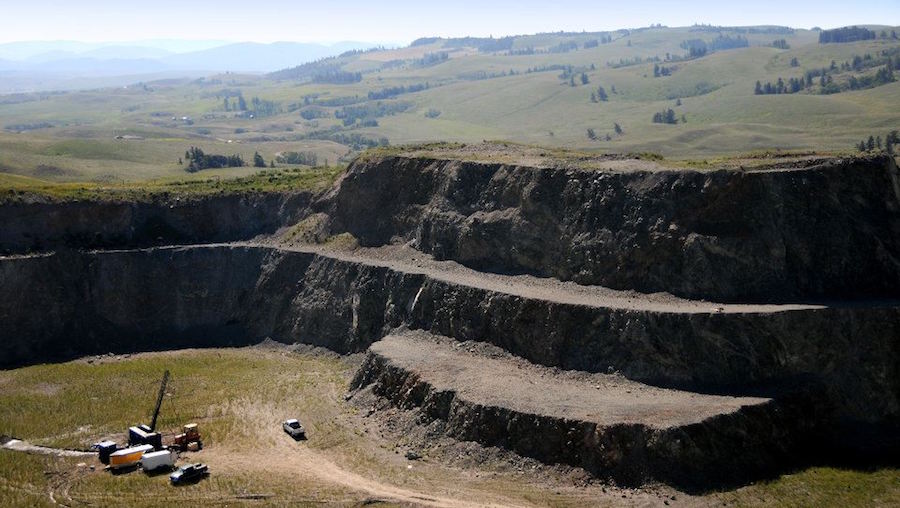
A prospective copper-gold mine in south-central British Columbia has been handed a setback by local First Nations who oppose the project.
An environmental review panel led by the Stk’emlúpsemc te Secwépemc and the Tk’emlups had been deliberating the pros and cons of the controversial $1.3-billion mine, located on the outskirts of Kamloops, for the past few months. On Saturday, in a 200-person ceremony announcing their rejection, one of the indigenous groups said a lake and the land around it where the mine is to be located, holds spiritual significance.
“The current environmental approval process in British Columbia and Canada uses science but doesn’t take into consideration our traditions and our culture,” said Stk’emlúpsemc te Secwépemc councillor Janet Jules, quoted by CBC News. “That’s what we emphasized with our consultations.”
However the decision isn’t the end of the Ajax mine; final word goes to the federal and provincial environmental assessment offices. On January 18 the mine developer, KGHM Ajax Mining, submitted an application to them for an environmental certificate.
The open-pit mine about 400 kilometres from Vancouver has been under consideration since 2006, but has run into opposition mostly due to its close proximity to Kamloops, a medium-sized Interior B.C. city. A survey done in 2013 showed nearly 75 per cent of respondents opposed the mine. Recently Mining Watch calculated the risk to the proponents, KGHM International (TSX:QUX) and Abacus Mining & Exploration (TSXV:AME), of pushing ahead with the project, saying it could cost them over $100 million in litigation or compensation costs.
But KGHM says on its website that it has taken local concerns into account by moving the facilities farther from the city, while also increasing the processor throughput by 5,000 tonnes per day (60,000 tpd to 65,000 tpd) in an updated feasibility study released on January 13.
The Ajax mine has proven and probable mineral reserves calculated at 2.7 billion pounds of copper, 2.6 million ounces of gold and 5.3 million ounces of silver. The 18-year mine would produce an annual 58,000 tonnes of copper and 125,000 ounces of gold.
CBC quotes KGHM saying the mine would generate 1,800 jobs during construction and 500 when it’s in operation.
5 Comments
David
Either the writing in this story is flawed or the process for environmental review in BC is flawed, or both. First off, how does a scientific environmental review get led by spiritual leaders and not scientists? When do scientific reviews get released during ceremonies? Anybody that has ever driven by that tiny little mosquito infested swamp (like I have) would know that there is no “special” cultural significance to it over any other land feature when dealing with a culture that historically thought every natural thing was sacred. Hell, even the wind can be sacred. Here’s and novel concept; how about Canada start a fresh clean slate with all of its minorities and treat everyone equal. Who could argue with equality?
item no
The article and headline make it sound as if the local FN decision has nixed the project when in reality the EA process is currently on hold and no official decision has been made by the BCEAO or CEAA.
Jim sathome
Folks need to remember this area was part of the Teck Afton Mine before (just look at the photo – you are seeing benches from a small open pit that was active) and the other portion of that Mine is now operated as an underground gold mine by New Gold, and called New Afton (Which has about 25% Native Employees which is a good way to give them real benefit long term). The lake level was raised by a weir so it’s not so swampy. (I hear fishing can be quite good in it at times.) But as far as it being sacred, I too am a skeptic. This excuse was used recently on Taseko Prosperity for a lake there; but during investigation they found the person who said it was sacred never even visited the lake in question.
Retirdminer
And so goes mining in Canada. Lots of land no one cares about until a mining company shows interest…lol
/|/|ilo
They moved the tailings impoundment area just outside the city and onto First Nation territory… how is that better? The city still doesn’t like it, and now the Indigenous communities (that don’t exactly trust the feds) are involved. Amazing.